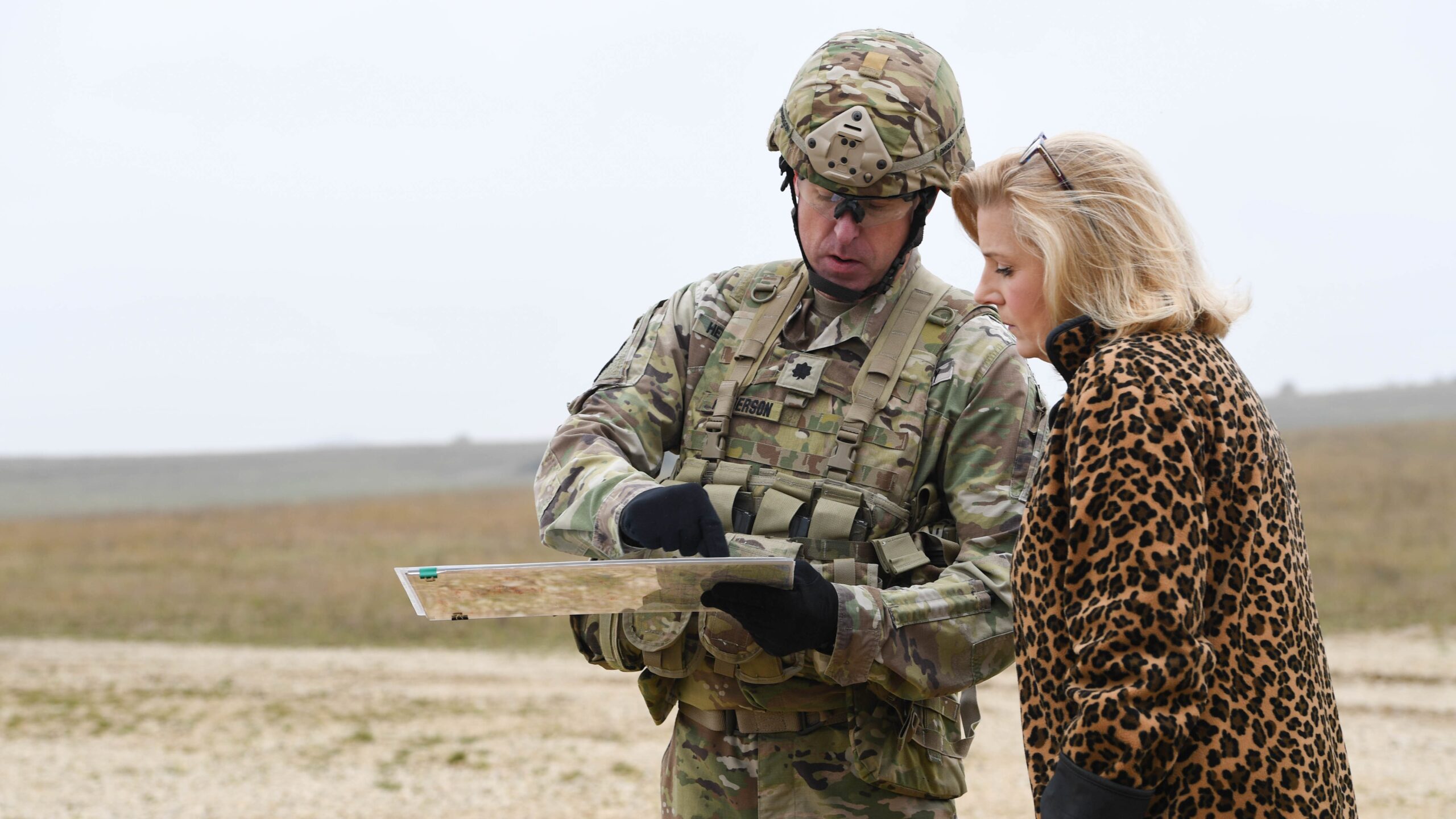
Secretary of the Army Christine Wormuth has hard choices ahead for her next budget. (U.S. Army/Staff Sgt. Keisha Brown)
WASHINGTON: For defense watchers wondering when the Biden administration’s fiscal year 2023 budget request will be coming, signs seem to be pointing towards a longer wait.
The Defense Department has yet to receive its official top-line budget figure from the White House for FY23, Army Secretary Christine Wormuth said today. While budget planning of course happens without that big picture figure, that the DoD has yet to receive that number would seem to indicate the next budget is unlikely to be rolled out in the near term.
That’s not a total surprise, given that the government is currently operating under a continuing resolution that appears likely to be extended through the middle of March; rolling out FY23 while still unsure of what FY22 will actually look like never seemed a feasible option. But Wormuth noted that not having that topline figure means any discussion around hard choices for the Army is premature.
RELATED: Trump-era nukes, Army programs likeliest FY23 budget cuts: Experts
“I am optimistic that we will get the resources that we need and be able to tackle things like reduced purchasing power and things like that, which is a real thing for us right now,” Wormuth said during a discussion at the Center for a New American Security. “And again, you know, once we know what our budget is, Gen. [James] McConville and I will work very hard to make sure that we have that sort of sustainable strategic, five-year budget that gets the Army where it needs to go.”
While the service secretary may be optimistic, there is widespread agreement in DC defense circles that the Army is likely to take a budget hit in FY23, as the Pentagon focuses more on the Indo-Pacific. Though she was quick to note the service’s importance for America’s global efforts, including the deployments this month to reinforce allies in the midst of the Ukraine crisis, Wormuth did not rule out potential cuts to modernization plans for the Army.
“We are going to have to make some hard choices, and everything is on the table,” she said, echoing comments made last October.
“I do think, looking into the out years of our programs, we may have to make some adjustments. Certainly my goal is to try and keep the momentum going in our modernization programs, because I think it is so critical to getting us on that sustainable, strategic path, but we are going to be looking carefully at every one of our sort of premier modernization programs — how it’s doing in performance, how affordable it is as we scale up,” and whether its realistic to transition from prototype to program of record, Wormuth said.
RELATED: FARA Farce: What the Army didn’t learn from the F-35
Stacie Pettyjohn of CNAS, who was interviewing Wormuth, brought up the question of the Future Attack Reconnaissance Aircraft (FARA), which is one of the programs experts have targeted for potential cuts. Wormuth didn’t comment on that possibility, but did say that the service has abandoned any idea that the FARA helicopter itself will be unmanned in the near future.
“Looking at the program right now, I don’t think we’re at the point — we’re not at the point from a technology standpoint, where fully unmanned, we’re not quite ready to go there, I think, frankly just in terms of the feasibility of it,” Wormuth said. “The helicopter itself is envisioned now to be manned. I think we are some distance away from being able to go fully unmanned, perhaps that is something further out in the future we can look at.”
However, she noted that the Army is still counting on being able to launch other unmanned systems from the helicopter itself as part of the FARA program.






















